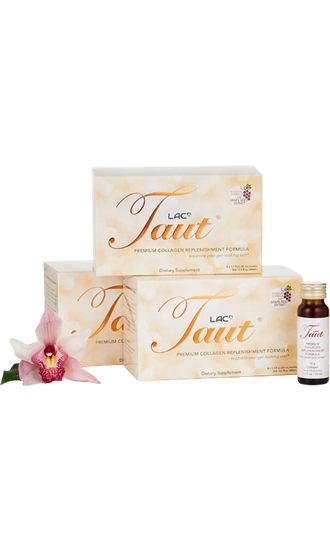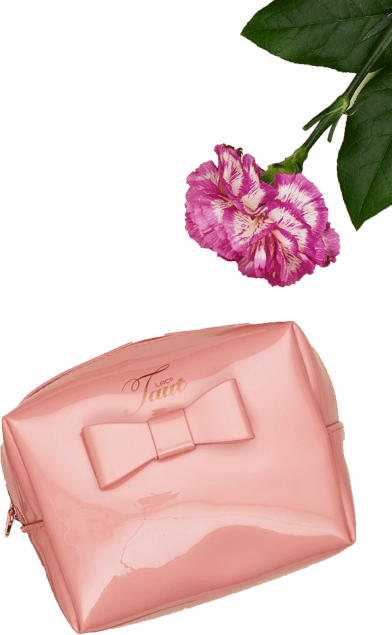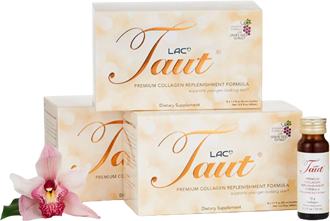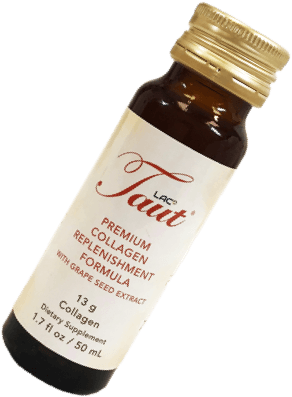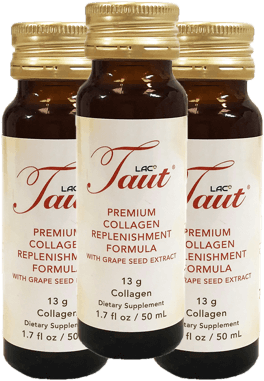How Sugar Destroys Skin Collagen?
Sugar Love? Why too much can age your skin.

We all hear it: sugar is bad for our body. Do you know it can be equally bad for our skin?
Sugar has been blamed for everything from obesity to diseases like type 2 diabetes, heart disease, and even some types of cancer. Some people are even calling sugar the new tobacco because it is highly addictive, and the effects of sugar can be incredibly detrimental to both our overall health and our skin. It’s hard to avoid especially when sugar exists in almost every product we eat, from natural foods like fruits and vegetables, to cereals, dressings, bread and other processed foods, cakes, candies, pastry, and our most beloved chocolates.
However, we need to ask why our body needs sugar, what is the purpose of sugar and how much sugar is enough before it gets bad and destroys our skin and body.
SUGAR – Why we need sugar and what does it do?
Sugar is a carbohydrate and it is essential to our body and health and actually keeps us alive because it's like energy food for our cells and also for our brain. Our body processes most carbohydrates including sugar into glucose, which appears in our blood as “blood sugar.” These blood sugars either are used immediately for energy or are stored in muscle cells or the liver as glycogen for later use.
The cells in our body need sugar for energy, but an increase in blood sugar level can trigger insulin release to manage this process. However, sugar cannot go into most of our cells directly. After we eat food and our blood sugar level rises, cells in our pancreas (known as beta cells) are signaled to release insulin into our bloodstream. Insulin then attaches to and signals cells to absorb sugar from the bloodstream. Insulin is often described as a “key,” which unlocks the cell to allow sugar in your bloodstream to enter the cell and be used for energy.
What happens when we have too much sugar and what does this do to our skin?
When we consume too much simple carbohydrate food like refined sugar, they rapidly break down into unused glucose, leading to the formation of advanced glycation end products, which results in oxidative stress and inflammation. The excess sugar gets attached to the fats and proteins in our skin, a process known as glycation, which leads to cross linking that weakens the skin's structure over time. During glycation particularly advanced glycation, excess sugar attaches to proteins, produces enzymes that can weaken and break down our collagen and elastin fibers (which are responsible for giving youthful skin its plump, smooth appearance and are most susceptible to glycation), leaving skin discolored and less smooth, leading to sagging skin and wrinkles.
Glycation can also accelerate the aging process, increasing the signs of aging skin and worsening skin conditions like cellulite, acne, and rosacea.
How much sugar does our body need?
The recommendations for daily sugar intake vary depending on the organization providing the recommendation. For example, the World Health Organization recommends keeping added sugar intake at 5% of daily caloric intake. For the average 2,000 calorie diet, that is a maximum of 50 grams. The American Heart Association recommends no more than six teaspoons of sugar for women and nine teaspoons of sugar for men. One teaspoon of sugar has about four grams of sugar. A medium-sized orange contains about 12 grams of natural sugar. A cup of strawberries contains about half that. If you opt for that 20-ounce cup of soda, here’s what you get instead: 225 calories, and 60 grams of added sugar, which more than the daily recommended sugar intake. Also pay attention to how much sugar in processed pastries and desserts -- they can add up.
How about those favorite mixed drinks? Grams of sugar start to add up when you consume them. For every ounce of soda, tonic water, or fruit juice, there is approximately 4 grams (or a teaspoon) of sugar. Mixed drinks, such as margaritas, pina coladas and daiquiris, can contain over 30 grams of sugar per serving. When selecting a lower-sugar alcoholic beverage, wine and distilled liquor are better as they are low in sugar and they get metabolized differently than the sugar in mixed drinks.
If we eat fresh fruits and vegetables and cut down on artificial sugar drinks, we would need to eat a quite a number of fruits to reach the daily recommended dosage. It’s no wonder doctors and nutritionists recommend that we eat fresh fruit, vegetables, and meats that contain natural sugar, without adding any more sugar to our diet is the healthy way to go.
Sugar that is especially bad for you - Natural sugar turned artificial
If you’re trying to lower your sugar intake, you may be seeking out sugar-free foods. However, it’s best to avoid sugar-free foods because they typically contain artificial sweeteners like aspartame, sucralose, and saccharin. These sweeteners don’t help to curb a sweet tooth despite their sweetness, and they can send confusing signals to the brain and cause you to overeat. Consuming artificial sweeteners is also bad for your skin because it contributes to glycation.
Sucralose, aka Splenda, is a popular artificial sweetener. Although sucralose contains no calories, a study in the Journal of Toxicology and Environmental Health, Part B: Critical Reviews linked it to harmful biological effects in the body. Sucralose was shown to reduce good gut bacteria, limit the absorption of therapeutic drugs, and is also associated with metabolic disorders like heart disease when consumed frequently. Sucralose is also associated with inflammatory bowel disease. Research published in Trends in Endocrinology & Metabolism associated sugar substitutes containing sucralose with Type 2 diabetes, heart disease, obesity, and metabolic syndrome.
High Fructose Corn Syrup - avoid at all costs
Nearly every cell in the body can use glucose as energy, but only the liver cells are capable of breaking down fructose. A high intake of fructose has been associated with increases in obesity, diabetes, and non-alcoholic fatty liver disease, according to Harvard Health . Most fructose in the American diet comes from high-fructose corn syrup (HFCS) and processed foods, not fruit, so it provides little in the way of nutrition besides calories. HFCS is problematic because in the process used to make it, the glucose and fructose, which are naturally bound together, are separated. This causes the fructose to go directly to your liver, which leads to fatty liver , and in turn, diabetes. HFCS also contains other toxins from the chemical contaminants used during manufacturing.
Is there such thing as a "good" sugar?
Sugar is sugar, no matter where it comes from. That being said, you don’t have to give up sweeteners altogether. There are many types of natural sugars that are marketed as being healthier alternatives to table sugar. Some examples of natural sweeteners include: Stevia, Raw honey, Maple sugar, Molasses, Date sugar, and Coconut sugar.
They are better, healthier sugars because they have low Glycemic Index, which means when we take them, it will not create a sudden increase in our blood sugar, which leads to inflammation and glycation.
Coconut palm sugar is made from extracting, boiling, and dehydrating the sap of the coconut palm. It has a nice thick texture and can be used for pancakes, cakes, even coffee and tea. Manufacturers of coconut palm sugar claim that it has a low glycemic index.
Other good natural sweeteners are honey, maple syrup, blackstrap molasses, and Stevia, which are less likely to cause glycation and reduce the signs of aging compared to regular sugars. These natural sweeteners have a lower glycemic index than table sugar and thus are less likely to cause blood sugar spikes. They also have added health benefits. For example, maple syrup contains up to 54 different types of antioxidants, honey has antimicrobial properties that help you fight colds, and blackstrap molasses is high in vitamins and minerals. Agave nectar isn’t considered a good option because of its high fructose content.
How about Stevia? Stevia is an intensely sweet-tasting plant that has been used to sweeten beverages and make tea since the 16th century. Stevia has no calories, but it is 200 times sweeter than sugar in the same concentration. Research has shown that stevia sweeteners do not contribute calories or carbohydrates to the diet. They have also demonstrated no effect on blood glucose response. Because of its non carbohydrate and calories properties, it does not increase blood sugar and cause skin inflammation or glycation. Other studies suggest stevia might have extra health benefits. According to a 2017 article in the Journal of Medicinal Food, stevia has potential for treating endocrine diseases, such as obesity, diabetes and hypertension, but that more research is needed.Many of our customers ask us: How much sugar is in Taut Premium Collagen Drink?
We are proud to share with you that each 1.7 oz bottle of Taut Premium Collagen Drink contains only 2 grams of sugar (1/2 tsp), and, the sugar in our product is derived from Stevia Leaf extract. So for every tiny bottle of Taut you drink, you will not only enjoy the delicious taste with powerful collagen and anti-aging ingredients that work for your skin, you will do so without the damaging side effects of having too much sugar and the wrong type of sugar.
Taut Premium Collagen is, after all, formulated with only the best premium clean ingredients designed to rejuvenate and restore collagen and elastin, promoting healthy youthful radiant skin.


